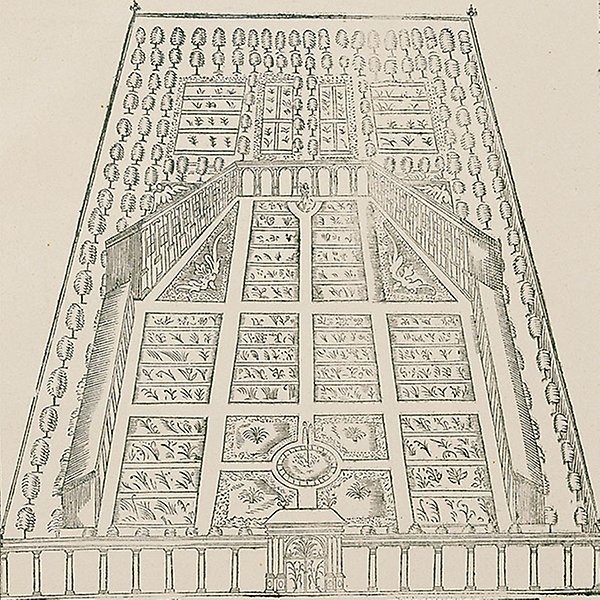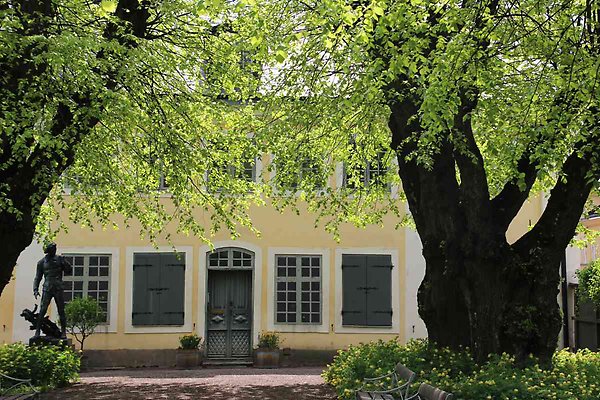History
Sweden's oldest botanic garden
The Botanical Garden of Uppsala University is the oldest in Sweden. It was founded in 1655 by the polymath Olof Rudbeck the elder, Professor of Medicine. At that time the garden was located in central Uppsala, in the Svartbäcken district near the Fyrisån river (figure). In the garden the medical students could learn botany and study medicinal plants. By the end of the 17th century there were more than 1800 plant species in the garden, many grown for the first time in Sweden – for example the potato.
Olof Rudbeck’s botanic garden was badly damaged during the great Uppsala fire of 1702. As the university lacked resources to restore it, the garden entered a period of decline.
In 1741 Carl Linnaeus was appointed as Director of the, by then, dilapidated botanic garden. He transformed it into one of the foremost gardens in the world. Through his world-wide network of contacts he was able to bring in thousands of plant species. They were grown in a particular order determined by Linnaeus, according to his Sexual System or in ecological plantings. Today, Linnaeus’ botanic garden has been reconstructed according to his original plan from 1745. It is now called the Linnaeus Garden and is a living memorial to the great naturalist.

Hortus Upsaliensis according to the design of Olof Rudbeck the elder, as published in Atlantica 1675.
The garden by the River Fyris after Linnaeus
After the relocation of the Botanical Garden the old garden by the River Fyris were neglected and transformed into park land and potatoe-patches. The Orangery was reconstructed and used as club house for students at the University and the Director Musices moved into the directors lodge.
The old garden was in a state of neglect for more than 100 years, until 1917, when the Swedish Linnaeus Society was founded and began to reconstruct the Linnaeus´ garden. The restoration was possible thanks to Linnaeus´ detailed plant lists and garden maps. The old residence has been turned into a museum and is still managed by the Swedish Linnaeus Society. The responsibility for the garden has been handed over to Uppsala University.
Some famous people from the history of the Linnaeus Garden
The Linnaeus Garden has had several prominent and famous directors: Olof Rudbeck the Elder, Carl Linnaeus and Carl Peter Thunberg. It has also benefited from the expertise of outstanding head gardeners.

Some famous people from the history of the Linnaean Gardens
The Linnaean Gardens have had several prominent and famous directors: Olof Rudbeck the Elder, Carl Linnaeus and Carl Peter Thunberg. We have also benefited from the expertise of many outstanding head gardeners.
The Linnaeus Museum - Linnaeus’ home and office
Linnémuseet är inrymt i prefektbostaden i Linnéträdgården i Uppsala. Där bodde Carl von Linné och hans familj under andra halvan av 1700-talet. I museet visas en samling möbler, föremål och målningar som berättar om Linnés liv både som vetenskapsman och privatperson.
Home life and scientific achievements
När Carl von Linné tillträdde som professor i medicin och botanik 1741 var huset i så dåligt skick att han vägrade att flytta in med sin fru och sin späde son. Det hus som Olof Rudbeck den äldre hade låtit uppföra 1693 som prefektbostad för akademiträdgården var enligt Linné ”mera likt en rövarkula och ett ugglenäste” och byggdes om kraftigt innan han kunde flytta in runt 1743. Huset har fungerat som bostad åt universitetets tjänstemän fram till 1935. Den siste som bodde här var universitetets director musices, tonsättaren Hugo Alfvén.
